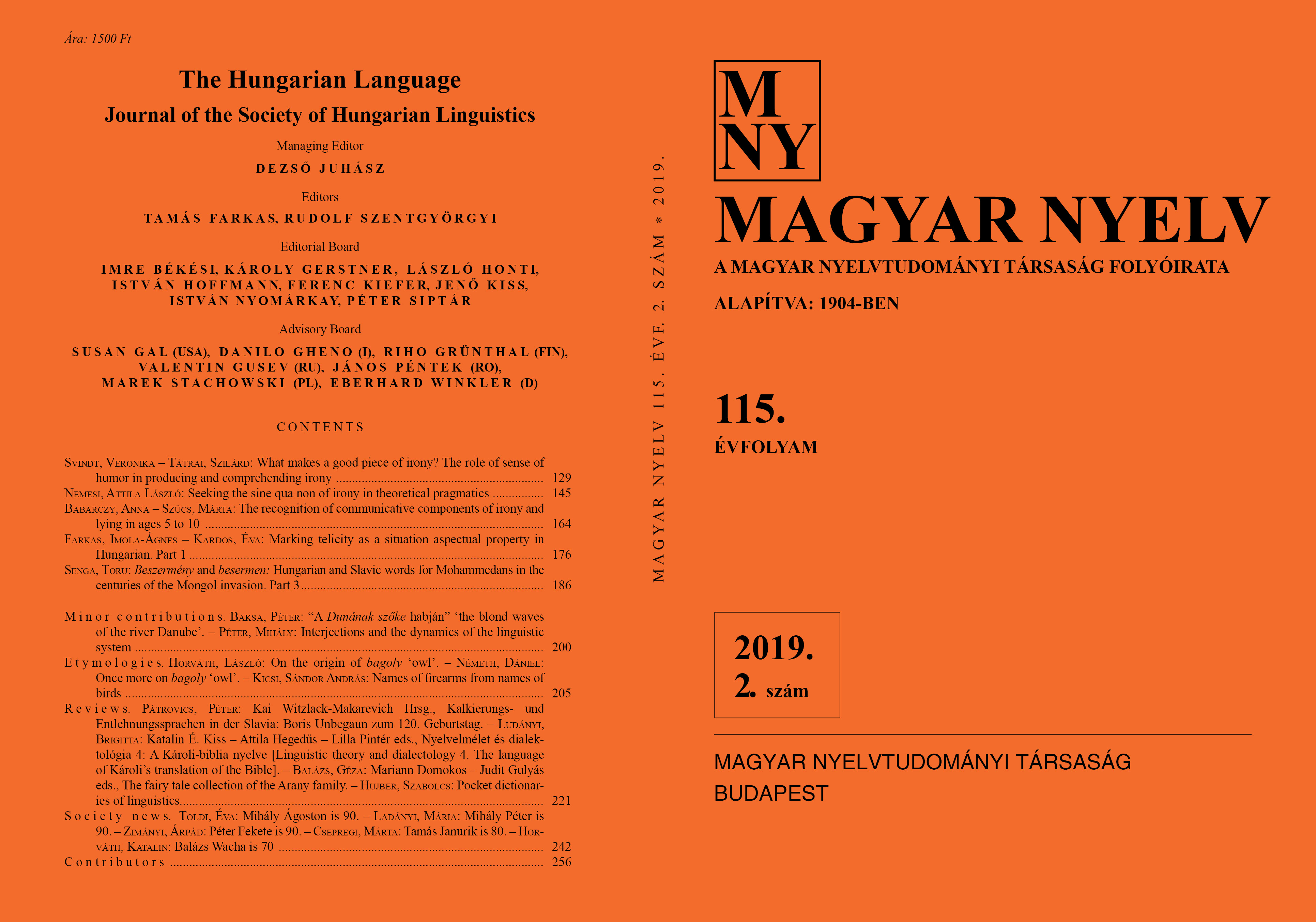Seeking the sine qua non of irony in theoretical pragmatics
DOI:
https://doi.org/10.18349/MagyarNyelv.2019.2.145Keywords:
irony, banter, sarcasm, humour, implicature, attitudeAbstract
In this article, first, several theoretical pragmatic accounts of (verbal) irony are outlined and compared from Grice (1975, 1978) to present-day researchers. A number of examples, taken from musical anecdotes and the pragmatics literature, are discussed, including the controversial types. Then, the results of an empirical study are presented to shed light on the lay concept of irony: 100 Hungarian university students were asked to provide a definition, two examples and reasons why people use irony in communication. Based on their responses and the literature overview, it is argued that irony invariably conveys an implicit negative (sceptical, critical, dissociative, mocking, facethreatening) attitude that clashes with and overrides another, explicitly or less implicitly expressed evaluation. The ironic attitude is characterised as a continuum ranging from banter to sarcasm, with no sharp boundaries from both sides. This minimalist view of irony offers a natural explanation of the existence of humorous irony and ironic combinations of figurative language.
Downloads
Published
Issue
Section
License
Copyright (c) 2024 Attila László Nemesi

This work is licensed under a Creative Commons Attribution-NonCommercial-NoDerivatives 4.0 International License.
Magyar Nyelv is a Diamond Open Access periodical. Documents can be freely downloaded and duplicated in an electronic format, and can be used unchanged and with due reference to the original source. Such use must not serve commercial purposes. In the case of any form of dissemination and use, Hungarian Copyright Act LXXVI/1999 and related laws are to be observed. The electronic version of the journal is subject to the regulations of CC BY-NC-ND (Creative Commons – Attribution-NonCommercial-NoDerivatives).
The journal permits its authors, at no cost and without any temporal limitation, to make pre-print copies of their manuscripts publicly available via email or in their own homepage or that of their institution, or in either closed or free-for-all repositories of their institutions/universities, or other non-profit websites, in the form accepted by the journal editor for publication and even containing amendments on the basis of reviewers’ comments. When the authors publicize their papers in this manner, they have to warn their readers that the manuscript at hand is not the final published version of the work. Once the paper has been published in a printed or online form, the authors are allowed (and advised) to use that (post-print) version for the above purposes. In that case, they have to indicate the exact location and other data of the journal publication. The authors retain the copyright of their papers; however, in the case of an occasional secondary publication, the bibliographical data of the first publication have to be included.



